Media | Articles
Limited-edition woody Grand Wagoneers support Hagerty Drivers Foundation
Almost as soon as Stellantis unveiled the 2022 Grand Wagoneer, the question was asked: Where’s the woody option?
The new Jeep Grand Wagoneer is a long-lost return of America’s first “woody” luxury SUV from the ’80s. It starts at about $89,000, can be optioned into the six figures, and has been receiving rave reviews. It has already proved to be a legit challenger to the class kings from Cadillac and Lincoln.
However, since it came out, many who were old enough to remember the original (sold from 1962 to 1991) were hoping for an OEM wood-sided version. (Well, sort of “wood-sided.” Even the original was never really wood—sorry to be the bearer of bad news!—but rather a sticker.) One company has decided to take on that challenge and is creating limited-edition, hand-painted woody Grand Wagoneers, with proceeds from each sale benefitting the Hagerty Drivers Foundation.
Despite the fact that it wore a sticker, Jeep’s woodgrain wonder from the ’80s is more desirable than ever, with median values of #2 (Excellent) condition 1984–1991 Grand Wagoneers up 98 percent in the Hagerty Price Guide over the past five years.
People are clearly interested in a wood-sided vintage SUV. What about a modern one?
Marketplace
Buy and sell classics with confidence
There is already a large crop of current luxury SUVs with similar-looking designs (think Navigator and Escalade). Jeep tried to differentiate itself with a few nostalgic cues, like the seven-slot illuminated front grille. But the thing that would really make the Jeep stand out and link the Grand Wagoneer to the brand’s past success would be wood trimmings on the SUV’s sides.
The Grand Wagoneer nameplate is, by Stellantis’ own definition, a “premium extension of the Jeep brand,” and Performance Art Grand Wagoneers are taking that to the next level.
“The new Grand Wagoneers are amazing vehicles; they are powerful, luxurious, and impressive,” states Ron Flint, president of Motive, the company behind these Performance Art Grand Wagoneers. “They are, however, missing the distinctive woodgrain sides that made them an icon in American car culture. We are making them spectacular again as Heritage Series Art Cars with the personality and style of the original Grand Wagoneers.”
The process
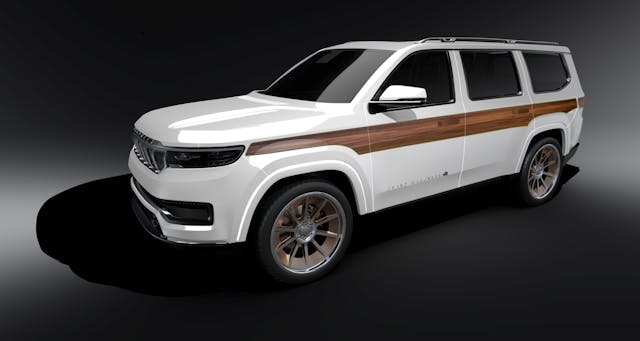
There are companies that will charge $2000 for a woodgrain vinyl sticker. That’s not this. Performance Art Grand Wagoneers feature hand-painted woodgrain art that is literally buried under the vehicle’s clearcoat. Woodgrain artist Stuart Lyman, master of an almost forgotten technique developed decades ago by the auto industry, will create only 15 white Classic Woody Edition Grand Wagoneers with Dark Walnut woodgrain in this first limited-edition series. Other color series with similarly limited numbers will follow.
These become true works of art. There are just a handful of woodgrain artists proficient in using this method in the vehicle restoration world. Because of the unique process and artist’s touch, just like wood, no two vehicle’s woodgrain will be the same.
“We appreciate the dilemma faced by the Jeep design team, says Flint. “After all, how can the new Grand Wagoneer feature wood—or even worse, fake wood decals and plastic moldings—as a premium luxury vehicle?
“We had the idea to bring wood back to the new Grand Wagoneer by making each vehicle a piece of art. Owners can select from several woodgrains patterns including classic dark walnut, blackwood, redwood, zebrano wood, Hawaiian koa wood, and highly stylized multi-colored burnt-art woodgrain.”
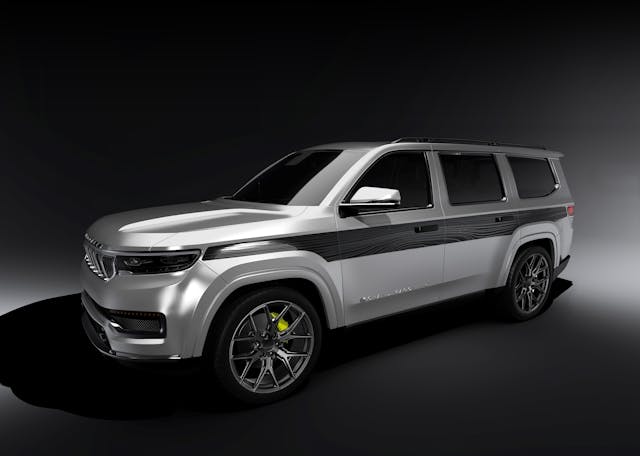
The process begins with the vehicle being prepped in a painting facility. The body panels are color-sanded and pre-mask templates applied. The woodgrain basecoat is applied first. Metal flat plates engraved with a selected woodgrain pattern have special ink applied to them. Purpose-made soft rollers of various sizes are then rolled across the plates, picking up the ink in the woodgrain pattern. The artist then rolls these over the body panels transferring the woodgrain ink pattern to the vehicle’s sides.
The graining is done in sections and the artist finishes it off by hand, using a variety of fine brushes. Multiple layers and colors can be laid over a base coat for different effects. Toners are used to add depth and then the full body panels of the vehicle are sprayed in factory clearcoat. The painted panels are color-sanded and buffed. The painted artwork is buried under the clearcoat and cannot be felt when running your hand over it.
So, in other words, this is worlds apart from sticking a piece of vinyl that looks like wood on the side of an expensive SUV.
The vehicles
Performance Art Grand Wagoneers come in three models (Classic, Grand Adventure, and Grand Touring), all specifically designed to reclaim the throne as the coolest of all the big luxury SUVs. Each model features unique forged or factory-style wheels and optional performance and lifestyle equipment. Models can include unique touches like a roof spoiler, performance brakes, and stainless-steel exhaust.
Optional gear is wide-ranging from custom leather luggage to color-matched Jeep e-bikes, Airstream trailers (with matching painted woodgrain), and personal watercraft. Performance Art Concierge can even arrange outdoor adventures for the new owners.
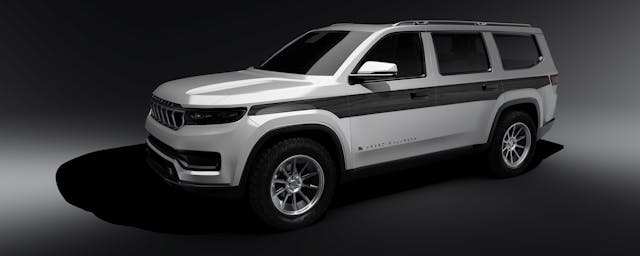
Performance Art Grand Wagoneers start at $150,000 and are available exclusively through Motive and Windward Dodge-Chrysler-Jeep-RAM. Production is limited to only 15 of each color series at Aria Group’s state-of-the-art automotive design, engineering, and manufacturing facility in Irvine, California.
For more information on how to reserve yours, email concierge@performanceartvehicles.com, call (949) 212-0402, or visit www.performanceartgrandwagoneers.com.
These woody Grand Wagoneers will debut in March at a media event at Hagerty Garage + Social event facilities in Southern California. Performance Art is a Motive program-brand developed to encourage and facilitate support from the automotive community for worthy causes.
Motive was founded to design, build, and market dynamic specialty vehicle concepts that create opportunities for social change and give back to charitable organizations. Motive works with OEMs, dealerships, major brands, auto industry suppliers and retailers, the media, charity organizations, celebrities, and foundations to find ways to leverage our culture’s love of cars to make a difference in the world. Recent and past organizations supported include the USO, Semper Fi Fund, CHOC Children’s Hospital, Victory Junction Camp, and Hope of Life Guatemala.
So much more than just limited-edition vehicles
“One day I found myself carrying a dying baby out of the jungle in a specially made Jeep that I designed to get them out. Taking this baby down from a mountain to a hospital, I thought to myself, ‘How did a car geek like me end up here?’”
The founder of Motive, the company behind these special Grand Wagoneers, Ron Flint has spent his career creating limited-production cars. It is a unique career path that eventually led to him helping with specially designed Jeeps to serve the mission field.
Flint, who is 68 years old now, grew up working on 1955–57 Chevys. Like many kids who read Hot Rod Magazine, his dreams were filled with Hurst cars and the hopes of becoming a car designer someday.
From 1977–83, Chevy only made hardtop Corvettes. Without experience in the area, Flint decided he wanted to design a convertible. After learning GM had left over convertible parts from previous Corvettes, he borrowed $10,000 from his grandparents and purchased everything GM had on hand. He assembled a team, including his dad, to cut up T-top third-gen Corvettes and hand-make 1977–83 Corvette convertibles. GM took notice and purchased the project from him when it offered a convertible Corvette once again, in 1984, with the fourth-generation model.
Flint now had the bug to create what he calls “vehicles that were cooler than you could get from the factory.” This led to more projects including making 500 special-edition Chevy S-10 Blazers for the Olympics, creating electric mail trucks from a Subaru kei car, and eventually working his way up to become president of the company he dreamed about as a kid, Hurst Performance Vehicles.
Relaunching the iconic line of Hurst vehicles is where Flint first experienced selling cars that benefit charity. The company built a Hurst 50th Anniversary Dodge Viper whose proceeds benefitted Victory Junction (a NASCAR-themed camp founded by the Petty family and designed for children with serious medical conditions). Flint was creating dream cars, which of course featured the historic Hurst pistol-grip shifters, while helping facilitate donations to great causes. He even appeared on Jay Leno’s Garage showing off his Hurst Challenger creation.

After a series of Hurst performance vehicles, Flint turned his attention to Jeeps and founded Equip Heroes. The company works with Chrysler dealerships to build what it calls “HERO Jeeps.” Some are sold by Jeep dealers with a portion of the proceeds benefitting charity partners (USO, Semper Fi Fund, and Military Mobility), while others are built for real-world heroic roles in the capable hands of charity partners. These Jeeps go all over the world to serve on mission trips.

That’s what led Flint to take a team to Guatemala to provide and deliver a Jeep Wrangler and rescue aid to Hope of Life, a child-saving operation in the remote regions of Guatemala. These are some of the most rugged and remote regions of the jungle. The Jeeps are used to rescue malnourished and sick children from villages far from civilization. Some areas they traveled to were so remote that the people still spoke an ancient Mayan language that has evolved exclusively in that region.

Ron says he likes to create limited-production cars to benefit charity because “they inspire people to care, to give back, and to motivate others to get involved.”
He continues: “I love to leverage our culture’s love of the automobile to make a difference and support worthy organizations and causes.”
Benefitting Hagerty Drivers Foundation
A portion of the profits from each Performance Art Grand Wagoneer sold will be donated to support the Hagerty Drivers Foundation, a 501(c)(3) nonprofit organization that exists to celebrate and preserve car culture for future generations.
“We believe America’s automotive heritage is worth saving and celebrating,” said Jonathan Klinger, executive director of the Hagerty Drivers Foundation. “We applaud the efforts of Motive for recognizing this importance and supporting the next generation of enthusiasts through their support.”
The monies donated will go to Hagerty Drivers Foundations’ three main efforts: eliminating the financial barriers for people pursuing careers in the automotive industry, providing grants for teens taking driver’s education, and continuing to build the National Historic Vehicle Register.
Flint concluded by sharing: “In the end, I want to use these woody Grand Wagoneers to help tell the story of the Hagerty Drivers Foundation and the idea of saving driving and saving car culture. I want to do my part to keep driving cool and maybe inspire other companies to get involved and do their part.”
***
Check out the Hagerty Media homepage so you don’t miss a single story, or better yet, bookmark it. To get our best stories delivered right to your inbox, subscribe to our newsletters.
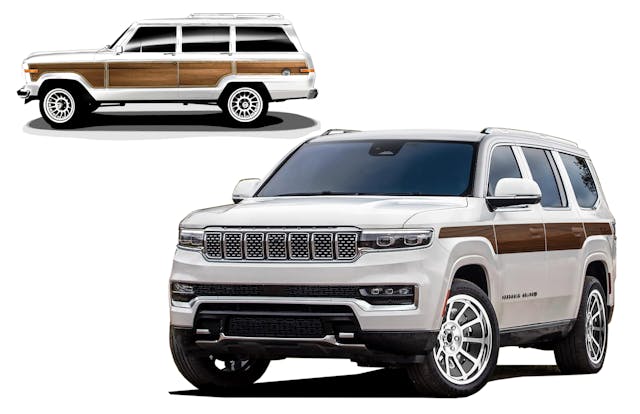








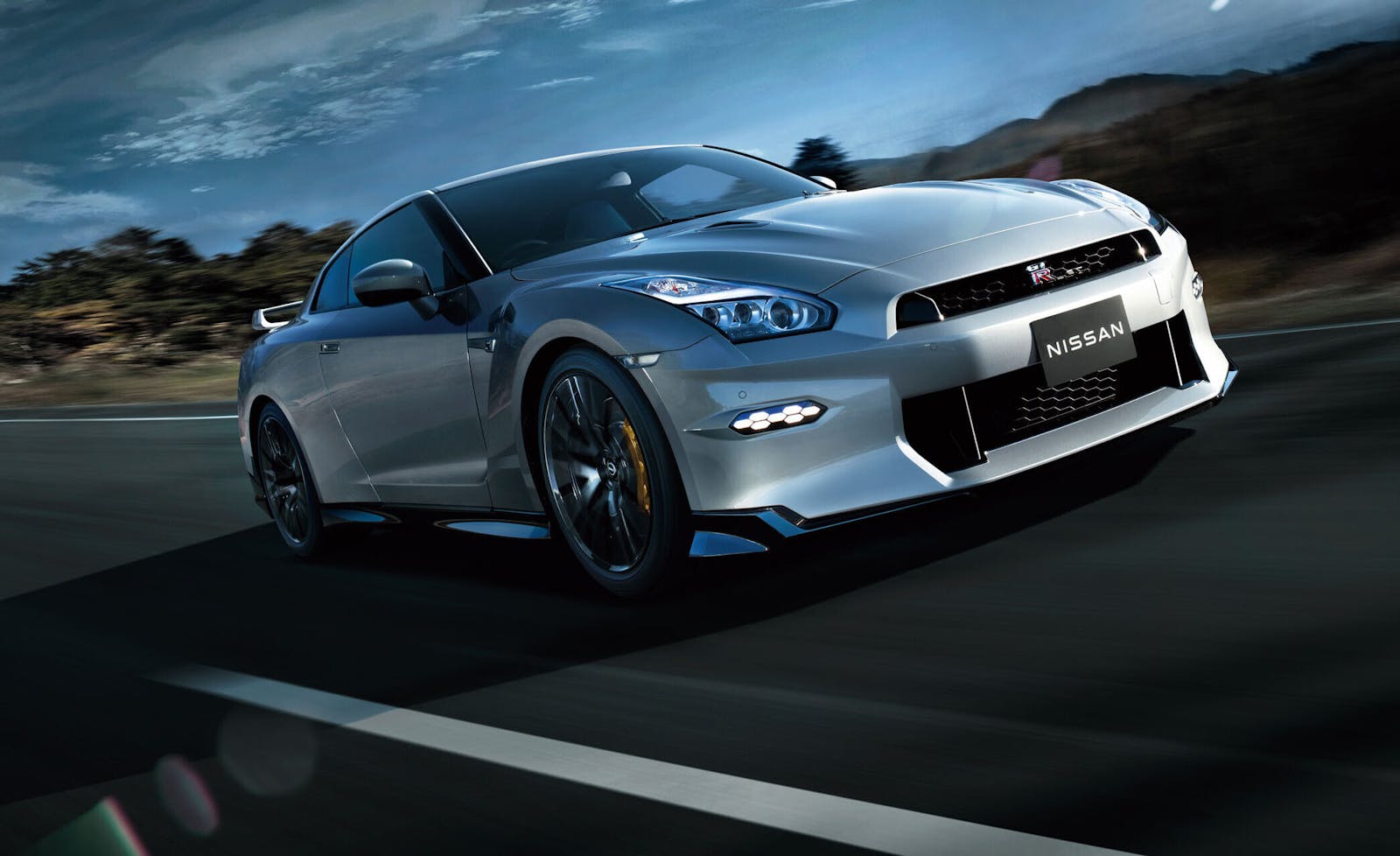







I’m not at all in the market for this type of vehicle, but I totally respect the historical nod and the quality in which they execute it.
Gee if you are going to that much trouble and charging an outrageous markup, why did you not do it correctly and take the wood grain to near the bottom of the doors like the original? See the photo of the original GW at the top of this article. Your wood grain stripe looks like a poor copy of a Camero Hockeystick from a 1969 Camero SS…..
I mean, props the artists and all… but wow. Y’all managed to collaborate and make an ugly SUV somehow, inexplicably uglier. Congratulations, I guess.
Y’all will probably sell all of them, too, adding to the myriad reasons why the planet should stop spinning and allow for some disembarkation.
If THAT’S what’s considered a “woody” nowadays….just… it’s pretty sad. Sorry.
Painted woodgrain? Umm, ok.
Waaay too much for a Jeep.
How many here think the vintage Jeep is better looking? I do.
If I could upvote your comment a thousand times, Jeff, I would. I’ll take the vintage over this new “version” every day and twice on Sunday.